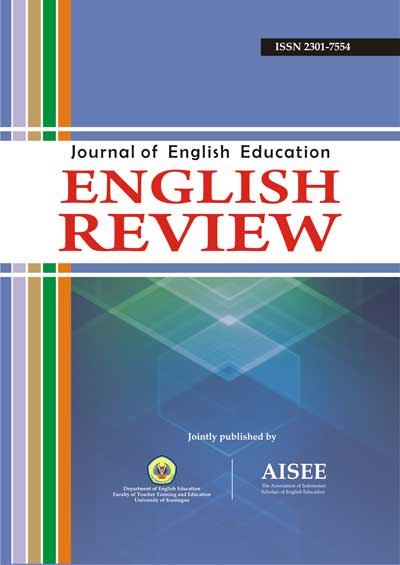ENHANCING STUDENTS’ INTERACTION SKILLS AND CRITICAL AND CREATIVE THINKING THROUGH MOVIES
Abstract
Abstract: In the context of higher education in Malaysia, the aims are to produce competent  and conï¬dent language users in the students who learn English as their second language. By incorporating movies in English language teaching, it will enable the students to learn English more actively, meaningfully and interactively. This study seeks to explore the potential use of movies as a teaching and learning tool in encouraging active participation and critical thinking in the English language classroom. The existence of technology in movies has made ways for the educators to do segmentations of the important parts in the movies for the limited classroom time. Critical thinking plays a vital role in education simply because of the personal and language enrichment. It also allows the students into self-directed thinking in making decisions more carefully, clearly and logically. It is important to incorporate the Universal Intellectual Standards of Critical Thinking Theory into the crucial foundation in encouraging active participation of students. It is believed that critical thinking will enable the students to engage themselves in their own pace of learning and provide greater freedom for expressing and arguments.
Keywords: movies, active participation, critical thinking, universal intellectual standard
All articles published in English Review: Journal of English Education (ERJEE) are licensed under the Creative Commons Attribution 4.0 International License (CC BY 4.0).
Copyright Ownership
Authors retain the copyright of their articles and grant ERJEE the right of first publication. The journal is granted a non-exclusive license to publish, reproduce, and distribute the article in any format, medium, or platform, provided that proper credit is given to the original authors.
License Terms – CC BY 4.0
Under the Creative Commons Attribution 4.0 International License, others are free to:
- Share — copy and redistribute the material in any medium or format
- Adapt — remix, transform, and build upon the material for any purpose, even commercially
As long as they:
- Provide appropriate credit to the original author(s) and source
- Provide a link to the license (https://creativecommons.org/licenses/by/4.0/)
- Indicate if any changes were made
There are no restrictions on the reuse, reproduction, or adaptation of published articles as long as attribution is properly given.
Author Warranties
By submitting a manuscript to ERJEE, authors confirm that:
- The work is original and does not infringe any existing copyright.
- The manuscript has not been previously published and is not under consideration elsewhere.
- All sources and references are appropriately acknowledged.
- Necessary permissions have been obtained for any copyrighted materials used.










